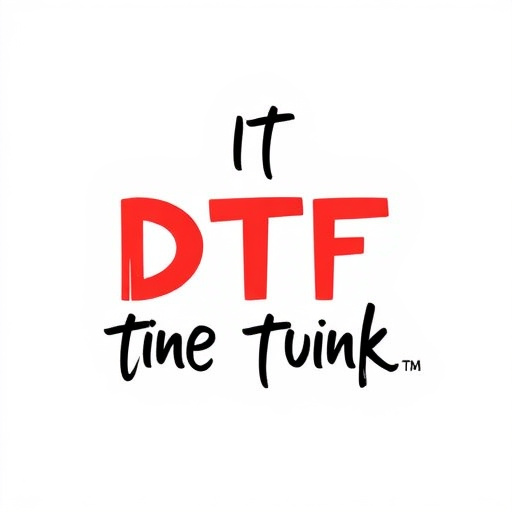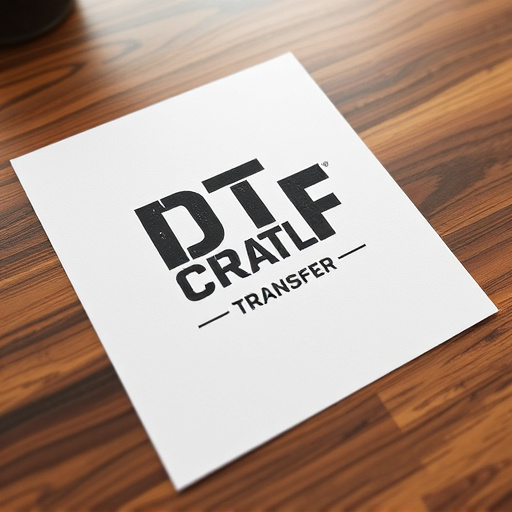Direct-to-film (DTF) printing is a cutting-edge technology offering high-quality, vibrant custom printing on fabric and plastic with minimal setup time. DTF inks create durable designs that resist fading, chipping, and smudging through a cross-linking process. This method is ideal for small businesses due to its cost-effectiveness, versatility, and superior wash resistance compared to traditional methods. Choosing the right substrate and following proper washing procedures ensures exceptional longevity of DTF prints in various applications like clothing, events, and promotional merchandise.
Direct-to-film (DTF) printing offers a revolutionary way to produce high-quality, durable prints that can withstand rigorous washing processes. This article delves into the world of DTF, exploring its underlying science and benefits for various applications. From understanding the printing process to selecting optimal substrates and avoiding common pitfalls, we provide a comprehensive guide. Discover how DTF inks defy traditional limitations, ensuring vibrant, long-lasting designs on textiles, and learn from real-world success stories showcasing the remarkable resilience of these prints through countless washes.
- Understanding Direct-to-Film (DTF) Printing: A Beginner's Guide
- The Science Behind DTF Inks and Their Durability
- Benefits of DTF Prints for Longevity and Wash Resistance
- Choosing the Right Substrates for High-Quality DTF Results
- Common Mistakes to Avoid in DTF Printing and Washing Processes
- Real-World Applications: Success Stories of DTF Prints Survival
Understanding Direct-to-Film (DTF) Printing: A Beginner's Guide

Direct-to-film (DTF) printing is a cutting-edge technology that allows for high-quality, long-lasting prints on various materials, directly from digital files. Unlike traditional printing methods, DTF eliminates many intermediate steps, making it a game-changer for many industries. The process involves using specialized printers to apply ink directly onto the surface of the final product, whether it’s fabric, plastic, or other materials. This method ensures that the design is precisely replicated, offering vibrant colors and intricate details.
For beginners, one of the key advantages of DTF printing is its versatility. It enables custom designs with minimal setup time, making it ideal for small businesses and entrepreneurs. Additionally, DTF prints are known for their durability; they can withstand multiple washes without fading or losing quality, ensuring that your creations remain vibrant and long-lasting. This technology has revolutionized the way we approach custom printing, offering a simple, efficient, and cost-effective solution for a wide range of applications.
The Science Behind DTF Inks and Their Durability

The science behind Direct-to-film (DTF) inks revolves around their ability to form strong bonds with various materials, ensuring longevity and durability. These inks are specifically engineered to undergo a cross-linking process during application, creating a robust layer that resists fading and chipping. The unique composition allows the ink to interpenetrate the substrate’s surface, forming a nearly inseparable bond. This mechanism is especially beneficial for items meant for frequent handling and exposure to washing machines, as it ensures the design remains vibrant and intact even after multiple cycles.
DTF technologies offer advanced protection against color bleeding and smudging, often seen in traditional printing methods. The molecular structure of DTF inks prevents colors from mingling, preserving the integrity of the artwork. Moreover, their resistance to moisture, sunlight, and common household chemicals makes them ideal for creating items intended for outdoor use or those that come into contact with various substances during daily activities.
Benefits of DTF Prints for Longevity and Wash Resistance

Direct-to-film (DTF) printing offers a significant advantage in terms of longevity and wash resistance compared to traditional methods. The process involves transferring ink directly onto fabric, creating a durable bond that withstands regular wear and tear. This is particularly beneficial for items like t-shirts, hoodies, and bags that are frequently laundered. Unlike other techniques where ink might crack or peel over time, DTF prints maintain their vibrancy and integrity even after multiple washes, ensuring the design remains sharp and appealing.
Moreover, the direct application of ink onto the fabric’s surface provides an extra layer of protection. This protective coating not only enhances the print’s durability but also repels water to some extent, making it less susceptible to fading or smudging. As a result, DTF prints can retain their quality for longer, even under rigorous use and exposure to various cleaning solutions.
Choosing the Right Substrates for High-Quality DTF Results

When it comes to direct-to-film (DTF) printing, selecting the appropriate substrate is key to achieving high-quality results that withstand multiple washes. The right material should offer excellent ink absorption for vibrant colours while providing adequate durability to prevent fading or cracking over time.
Opting for premium-quality, thick print media designed specifically for DTF applications can significantly enhance the longevity of your prints. These substrates often feature advanced coatings and finishes that improve ink adhesion and resistance to water, sunlight, and everyday handling. By choosing the right materials, you ensure that your DTF prints maintain their sharpness, vibrancy, and overall aesthetic appeal even after repeated laundry cycles.
Common Mistakes to Avoid in DTF Printing and Washing Processes

Direct-to-film (DTF) printing offers a unique way to create high-quality, durable prints, but like any process, it’s not without its potential pitfalls. One of the key challenges is ensuring that the inks used are compatible with the substrate and washing conditions to prevent fading or smudging. A common mistake is using low-quality inks or not properly testing them for compatibility, which can lead to disappointment when the prints don’t last as expected. It’s crucial to choose inks specifically designed for DTF printing, ensuring they meet industry standards for color vibrancy and longevity.
Another blunder often made is inadequate preparation of the print surface. Failure to clean and decontaminate the substrate thoroughly can result in ink rejection or uneven printing. Furthermore, improper washing techniques, such as using aggressive detergents or excessive water pressure, may damage the delicate ink layers. Always follow recommended cleaning procedures and use mild, pH-neutral soaps to preserve the integrity of the DTF prints during the washing process.
Real-World Applications: Success Stories of DTF Prints Survival

Direct-to-film (DTF) printing has proven its mettle in various real-world applications, showcasing its ability to withstand the test of time and multiple washes. From promotional merchandise to event signage, DTF prints have left their mark across industries. For instance, many clothing brands now use DTF technology for creating custom t-shirts and hoodies, which not only ensures high-quality designs but also guarantees that the colors remain vibrant even after repeated washings. Similarly, in the events sector, DTF printing has revolutionized the way organizers handle on-site signage and promotional items, offering durable yet cost-effective solutions that can be easily produced and distributed.
These success stories highlight the reliability and durability of DTF prints. The technology’s ability to bond directly with a variety of materials, from fabric to metal, ensures that the printed images are protected against fading and peeling, even under heavy use. As such, DTF printing offers businesses and individuals alike a reliable method for creating long-lasting, high-quality products that can stand up to the demands of everyday life.














